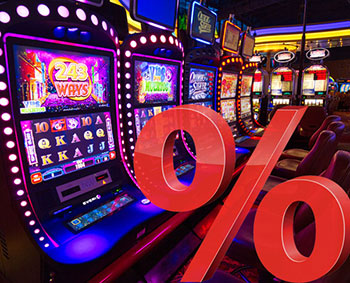More evidence refuting the study that “players can’t tell” when payback percentages are lowered
We Can Tell
by Frank Legato
 Last month, I told you about the July study from the University of Nevada, Las Vegas that concluded that players can’t tell the difference between low and high payback percentages on a slot machine. I told you the researchers missed the point in concluding that casino operators are better off going with lower payback percentages on their games because they’ll make more revenue.
Last month, I told you about the July study from the University of Nevada, Las Vegas that concluded that players can’t tell the difference between low and high payback percentages on a slot machine. I told you the researchers missed the point in concluding that casino operators are better off going with lower payback percentages on their games because they’ll make more revenue.
Even though it was for the September issue of Casino Player, I had written the column in late July, right after the study came out, because I felt strongly that the researchers had missed the point.
It turns out I wasn’t the only one.
In the time since the study came out and I wrote that column, there have been several industry analysts and columnists expressing opinions similar to mine, that is, that players do notice lower-paying slot machines, not because they can tell as they’re playing—they can’t, as the study found—but because their slot budgets over the longer term don’t last as long as 10 years ago, before this trend to jack up “house hold” (the converse of payback percentages) began.
I also noted that the eventual result of this trend is that people, tired of seeing their bankrolls disappear, will play less, and slot revenues will eventually drop.
One expert on this subject that confirmed my opinion was Jeff Hwang, a game developer and best-selling author. Hwang penned an article for Global Gaming Business in which he expressed basically the same opinion as I did in my September column.
But Hwang presented exhaustive research of his own to back up his opinion, research that I feel compelled to pass on to you here.
First, a few definitions. As noted above, what we players refer to as “payback percentage” is what the operators refer to as “house hold.” Payback percentage is the percentage of wagers, overall, returned to all players as jackpots. House hold is the converse, the percentage of all wagers held by the house after wins are paid.
What’s important to note is that this percentage is calculated over the life of a game, millions and millions of spins. Anything can happen in a single session of playing the game—or several sessions. It takes months for a game’s true return to be revealed.
That’s why the result of the UNLV study is meaningless—it proved an already-established fact. You can’t tell a slot machine’s payback percentage while you’re playing it. Yet, the “players can’t tell” headline was repeated and repeated in mainstream media outlets as something meaningful. It is not.
What is meaningful is that players are fed up with the lower payback, and many are abandoning the slot floor. Hwang’s research backs up this more important fact.
He began his GGB analysis by quoting from a 2005 study produced by one of the authors of the current UNLV study, which stated that as house hold rose, “wagering volume would be expected to decline,” followed by his own opinion that is really the crux of the matter here:
“The gambler doesn’t have to know what the house advantage is in order to be affected by it.”
To back this up, Hwang presented research from Iowa, the first riverboat gambling jurisdiction and a market that has essentially remained unchanged overall since the first riverboat was launched in 1991. Records for the 17 years of Iowa gaming through last year show that slot play increased steadily through the early 2000s, but the volume of wagers on slot machines dove after payback percentages were lowered following the 2008 recession. Wagers in 2018 were below 2002 levels, despite consistent renewals of slot games and introduction of a wealth of fun new play mechanics on the games themselves.
“The rise in the house advantage (the price of gambling, all else being equal) caused lower gaming demand in the form of weaker-than-expected slot volume, in turn ultimately resulting in stunted slot revenue figures,” wrote Hwang.
The authors of the study ignored this important relationship between overall slot payback percentage and the volume of wagers. The raw numbers from Iowa, in fact, showed that a 50 percent increase in the house hold (a 50 percent drop in payback percentage) caused a drop in slot wagers of a whopping 26.6 percent.
In other words, yes—whether or not we can tell as we’re playing on a given night, we, as slot players, do notice when operators lower their overall payback percentages on the games. Our bankroll is simply not lasting as long on the slots as it once did.
And, as the numbers also show, we are voting for higher payback. We’re voting with our wallets. ´


